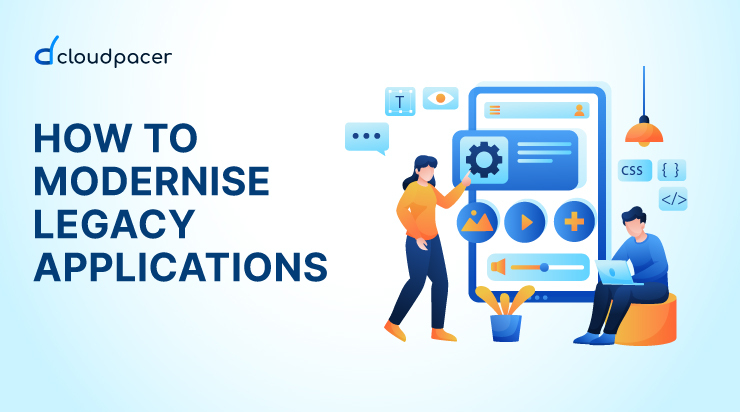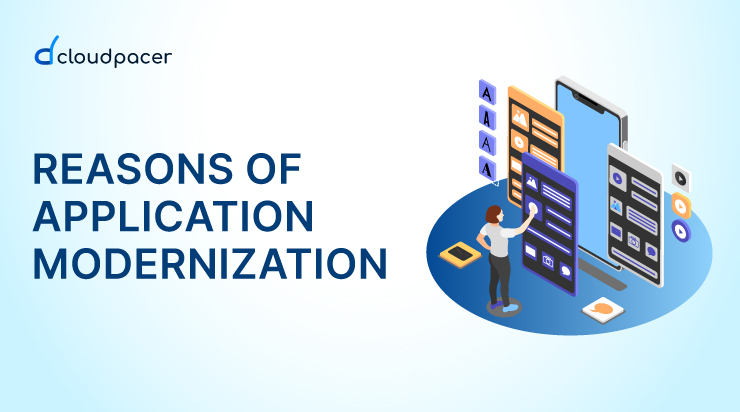In the current ever evolving business ecosystem, legacy applications often block progress. These systems, marked by old technology and design, can limit an organization’s capability to adapt to new business needs and create serious security and operational problems. Being competitive is crucial in today’s fast-moving industry; this is where updating legacy applications becomes important. In this detailed guide, we will look at the details of legacy software updating, its key importance, ways to approach successfully, possible challenges and solutions to modernize a legacy application.
Defining legacy applications
Legacy applications in IT mean software systems that have been used for a long time and usually have these traits:
Old technology stacks: Legacy applications often use old technology, meaning they were made with older tools and systems. These old technologies can make them not work well with current standards and practices.
Poor performance: These systems can have inefficiencies and slow response times that lower productivity.
Security risks: Because of outdated security and lack of updates, legacy applications are more at risk of cyber threats.
High upkeep costs: The ongoing maintenance and support for legacy applications can lead to rising costs over the years.
Limited ability to scale: Expanding these systems to meet increasing needs can be difficult and expensive.
Poor adaptability: Legacy applications may not easily adjust to changing business needs, making them not suitable for modern, fast-changing organizations. This is a major problem with legacy applications. They are developed on outdated legacy code which might be written poorly and annotated. This results in knowledge silos, which can be a huge strain on an organization when employees move on. Their successors may find it very hard to understand the code that’s been written, blocking the progress to making changes.
How to approach Legacy application modernization
Old system upgrades mean changing outdated, often big and not-so-efficient systems into newer, better, and more flexible solutions. Having a good plan for app upgrades is important for success. This plan helps you through the way of using microservices, encapsulating legacy software, and adding new upgrade solutions. The aim is to build a system that improves business methods and customer satisfaction.
Microservices play an important role in upgrading old applications. They mean taking large, single applications and breaking them into smaller, easier-to-manage parts or services. The idea of enclosing certain data or parts within clear limits is key to making software systems easier to maintain. Upgrading legacy applications is often part of a bigger change initiative. This change is about using digital tools to form new business methods and customer experiences to meet new business and market needs. It usually involves combining digital tools and customer-focused strategies for better business operations and competition.
The path to application modernisation starts with a detailed check of your organization’s applications and systems. This check looks at the current state, strengths, weaknesses, and areas that need improvement. After a thorough check, the next important step is to create a clear upgrade plan that aligns with your business goals and objectives.
A well-crafted modernization strategy ensures that the efforts are focused, cost-effective and designed to yield the desired outcomes.
Five main strategies for modernization
Updating legacy applications can happen in several ways, based on what your organization needs. The strategy you choose depends on things like how the application is currently functioning, budget limits, and what you want to achieve. Some typical strategies are:
-> Rehosting: Rehosting means moving old applications to a new setup with few changes to the code and functions. This is a good option when a quick switch is needed, but it may not fully realize modernization benefits. Knowing the code structure is important for understanding how the software is arranged.
-> Refactoring: Refactoring is about changing and improving the current code to make it work better and easier to maintain, without changing its main functions. This approach can help make an application more efficient.
-> Replatforming: Replatforming involves shifting old applications to a new platform or system. This can improve performance and allow room for growth, but it usually requires some code changes.
-> Re-architecting: Re-architecting is a complete redesign of the application’s structure to fit modern needs. It typically needs a step-by-step plan to manage the process and tackle any architectural problems.
-> Replacement: When old systems are too far gone, a full replacement may be needed. This option provides a new beginning but can lead to disruptions during the changeover.
Challenges and Solutions
Every organization’s path to modernization is unique, but there are several shared challenges that many face.
Technical Debt
Updating legacy applications can be difficult, often complicated by technical debt. This term in software development refers to issues that arise when a quick fix is chosen over a more thorough solution. Similar to financial debt, it reflects a dilemma between immediate benefits and future expenses. Technical debt comes about when developers opt for shortcuts or reduce code quality, whether intentionally or not, to meet short-term goals or deadlines. This is typically due to the lengthy nature of properly enhancing system quality. Such shortcuts can lead to poor code or temporary fixes that do not address the fundamental problem. To tackle technical debt, you can.
Focus on reduction: Aim to lessen technical debt in old code by restructuring and refactoring it to improve maintainability.
Shift to cloud-native systems: Adopting cloud-native systems can improve scalability and cost efficiency, ensuring your applications are equipped for future needs. You may also look into a wider cloud migration plan, possibly as part of a digital transformation initiative, or a hybrid cloud option if on-site solutions are necessary.
Utilise DevOps methodology: DevOps represents a methodology and cultural transformation in the software development process by emphasizing collaboration between development and IT operations teams. By streamlining workflows through automation and integration, DevOps enables faster delivery of high-quality software. This approach allows organizations to remain agile and responsive, leveraging real-world insights into system performance to continuously release updates and new features that align with user needs.
Security
Security is very important in modernization work. Application Modernization is a chance to strengthen and refresh security measures. To secure updated applications, add security from the start. Make cybersecurity a key part of the application’s structure and design from the beginning:
Do a risk check: Perform a full security risk check to find possible threats that may come up during modernization.
Set clear goals: Define the security needs and goals for the updated application. This includes areas like data safety, access controls, encryption, and following regulations.
Check for compliance: Finally, make sure that updated systems follow the relevant rules and that there’s a regular process to keep compliance up to date.
Future-proofing
Planning is very important. Make a detailed roadmap explaining how an organization plans to modernize its applications and keep things up to date in the future. This should cover goals, methods, timelines, and resources needed for modernization goals. To stay competitive and keep your modernized applications ready for the future, think about this:
Create APIs: Build application programming interfaces (APIs) to link updated systems with old applications and the larger ecosystem. APIs are key for allowing different software systems, services, and platforms to work together and interact.
Use frameworks: Frameworks are sets of tools, libraries, and rules that provide a base for creating software applications. They help streamline development by offering ready-made solutions for common tasks.
Utilise modern Technology
Utilize technologies such as automation, artificial intelligence, cloud computing, and other futuristic solutions. This may involve incorporating updated features and functionalities in the application or overhauling the entire system infrastructure when required.
In the end, modernising legacy applications is crucial for driving business growth and staying competitive in an evolving market.
Legacy application modernization with Cloudpacer
It’s important to update legacy applications to ensure business growth and to keep pace with the ever-changing business landscape. Cloudpacer application modernisation services can help you get there, with platforms designed to optimize observability, scalability and performance.
Our Application modernisation and Generative AI capabilities combined allows you to continuously automate critical actions in real-time, without human intervention, that proactively deliver the most efficient use of compute, storage and network resources to your apps at every layer of the stack. As a result, you avoid overprovisioning resources to your cloud environment and only use what you need, resulting in a lower cloud bill and a stronger ROI.
Ready to get rid of outdated legacy systems? Lets Talk!

